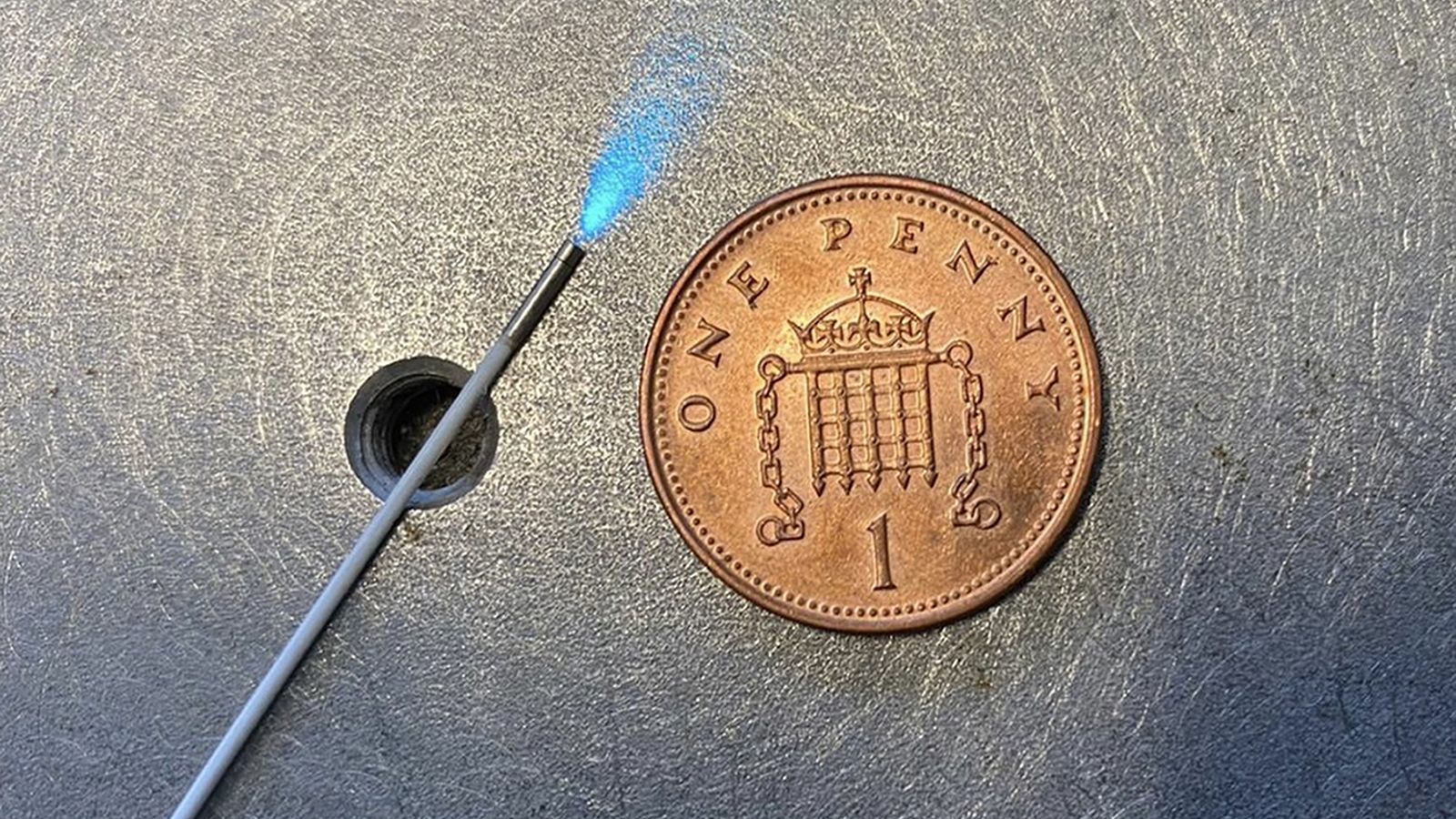A tiny microscope that can be manoeuvred through small spaces inside the body during surgery could speed up breast cancer treatment and help cut NHS waiting lists, say scientists.
Experts from Imperial College London have developed an endo-microscope that is less than 1mm in diameter – about the width of 25 human hairs – and is designed to be inserted into the body to provide views of tissue and organs.
The device is able to produce images from inside the tissue with “unprecedented speed” – up to 120 frames per second, the team said.
The hope is the endo-microscope, which is being developed by Dr Khushi Vyas and college colleagues, will help surgeons identify cancerous cells a hundredth of a millimetre in size at a much faster rate than traditional methods.
This will, the team says, help reduce the need for follow-up operations to remove cancerous cells that previously evaded detection.
Read more:
Most women can’t spot symptoms of ‘sneaky’ form of aggressive breast cancer, study finds
Cancer vaccine could become available by 2030, scientists behind COVID jab say
Couch potatoes ‘more likely to get breast cancer,’ experts warn
The instrument will also help with breast-conserving surgery, where the surgeon removes the cancer while leaving as much normal breast as possible.
Cancer vaccine could become available by 2030, scientists behind COVID jab say
Scientists discover gene that drives growth of colon cancer
Most women can’t spot symptoms of ‘sneaky’ form of aggressive breast cancer, study finds
Up to 20% of patients treated, currently need such operations.
The development of the endo-microscope is being supported by the Engineering and Physical Sciences Research Council (EPSRC), part of UK Research and Innovation.
‘Available in five years’
EPSRC director for cross-council programmes, Dr Kedar Pandya, said: “By reducing the time it takes to identify cancerous cells and improve the accuracy of imaging, the endo-microscope developed by Dr Vyas and his team could benefit patients and the NHS by reducing waiting lists.”
He added the aim was to push on with clinical trials with a view to it becoming available in about five years.
The researchers have used their system for preliminary studies on human cancer tissue and are now testing its use by surgeons and pathologists on laboratory samples of cancerous tissue.
For more on science and technology, explore the future with Sky News at Big Ideas Live 2022.
Find out more and book tickets here








